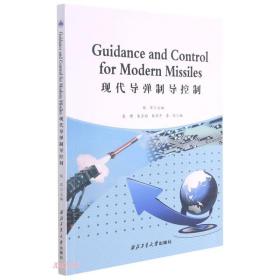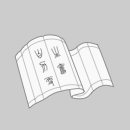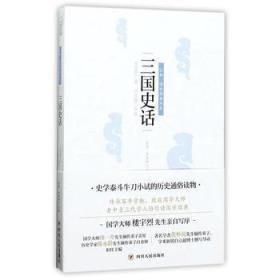
现代导弹制导控制(英文版)
¥ 34.71 5.9折 ¥ 59 全新
仅1件
山东泰安
认证卖家担保交易快速发货售后保障
作者杨军 编
出版社西北工业大学出版社
出版时间2020-10
版次1
装帧平装
货号602 11-15
上书时间2024-11-15
- 在售商品 暂无
- 平均发货时间 24小时
- 好评率 暂无
- 最新上架
商品详情
- 品相描述:全新
图书标准信息
- 作者 杨军 编
- 出版社 西北工业大学出版社
- 出版时间 2020-10
- 版次 1
- ISBN 9787561266571
- 定价 59.00元
- 装帧 平装
- 开本 16开
- 页数 246页
- 【内容简介】
-
本书重点讲述了现代导弹制导控制的相关理论和工程问题,系统而全面地介绍了现代导弹制导控制技术和控制系统设计原理。全书共分为12章,主要内容包括导弹概论、导弹制导控制系统设计的理论基础、目标特性和环境特性、导弹的基本特性、对导弹设计的基本要求、导弹制导控制系统元部件、导弹飞行控制系统分析与设计、导弹制导系统分析与设计、导弹制导系统抗干扰技术、先进导弹控制技术、先进导弹制导技术和导弹制导控制系统试验技术。
本书既可用作高等院校自动化类、航空航天类、兵器类等相关专业的本科生和研究生教材,也可供从事飞行器制导控制技术研究的专业科技人员阅读、参考。 - 【目录】
-
Chapter 1 Introduction
1.1 Definition and basic composition of missiles
1.2 Basic principles of missile guidance and control
1.3 Functions and compositions of missile guidance and control systems
1.4 Classification of missile guidance systems
1.5 Design methods for guidance and control systems
1.6 Quality standards for guidance systems
1.7 Several theoretical problems confronted by missile guidance and control systems
Key points of this chapter
Exercises
References
Chapter 2 Theoretical basis for designing missile guidance and control systems
2.1 Applications of classical control theories in designing missile guidance and control systems
2.2 Applications of modern control theories in designing guidance and control systems for missiles
Key points of this chapter
Exercises
References
Chapter 3 Features of targets and environment
3.1 Target features
3.2 Typical motion forms of targets
3.3 Radiation and scattering features of targets
3.4 Environment features
Key points of this chapter
Exercises
References
Chapter 4 Basic features of missiles
4.1 Definitions of coordinate systems
4.2 The six degree of freedom model of missile bodies
4.3 Missile body transfer functions
4.4 Missile body dynamic feature analysis
Key points of this chapter
Exercises
References
Chapter 5 Basic requirements for missile designs
5.1 Missile velocity feature
5.2 Restrictions on the missile normal overload, maximum available overload
5.3 Missile damping
5.4 Missile static stability
5.5 Missile\'s natural frequency
5.6 Missile aileron efficiency
5.7 Missile pitch/yaw efficiency
5.8 Stabilization of missile body dynamics features
5.9 Missile structure rigidness and sensitive components installation positions
5.10 Missile manipulation mechanism and control surface rigidness
5.11 Missile power system
Key points of this chapter
Exercises
References
Chapter 6 Components and parts of missile guidance and control systems
6.1 Seeker
6.2 Sensor system
6.3 Actuator system
Key points of this chapter
Exercises
References
Chapter 7 Analysis and designs for missile flight control systems
7.1 Attitude control system
7.2 Normal overload control system
7.3 Velocity control system
7.4 Position control system
Key points of this chapter
Exercises
References
Chapter 8 Missile guidance system analysis and design
8. 1 Basic concepts
8.2 Guidance system analysis methods
8.3 Remote control guidance
8.4 Homing guidance
8.5 Combined guidance
Key points of this chapter
Exercises
References
Chapter 9 Anti-interference techniques for missile guidance systems
9.1 Interference environment confronted by missile guidance systems
9.2 Anti-interference techniques for missile guidance systems
9.3 Anti-interference performance evaluation for missile guidance systems
Key points of this chapter
Exercises
References
Chapter 10 Advanced missile control techniques
10.1 Static unstable control technique
10.2 Flight control technique at large angle of attack
10.3 Thrust vector control technique
10.4 Bank-to-Turn (BTT) control technique
10.5 Direct force control technique
10.6 Multi-missile formation flight control technique
Key points of this chapter
Exercises
References
Chapter 11 Advanced missile guidance techniques
11.1 Missile multi-mode guidance technique
11.2 Missile intelligent guidance technique
11.3 Multi-missile cooperative guidance technique
Key points of this chapter
Exercises
References
Chapter 12 Missile guidance and control system testing techniques
12.1 Simulation testing techniques of missile guidance and control systems
12.2 Flight testing techniques of missile guidance and control systems
Key points of this chapter
Exercises
References
Appendix Symbol cross reference table
点击展开
点击收起
相关推荐
— 没有更多了 —

















以下为对购买帮助不大的评价